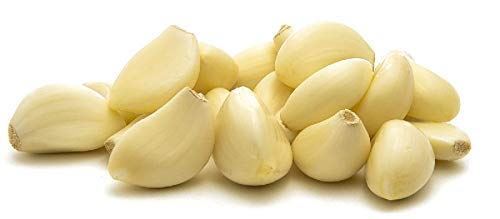Garlic (Allium sativum) is the paragon of blood cleansers and, with its abundance of sulfur (eighty different sulfur compounds), it is capable of killing viruses, bacteria, and fungi.
It can calm and feed the nervous system and help correct faulty digestion. The fresh juice is effective for cramps, spasms, and seizures. Combine it with ginger, French tarragon, or marjoram to prevent gas. Combined with onions it is very beneficial for colds and flu, but simmer rather than boil it, or it will lose much of its goodness.
Those with high cholesterol will find that it is reduced by garlic. It is a major anti oxidant, proven to help reduce the incidence of cancer and many other diseases.
Garlic juice, diluted to 1 part in 125,000, inhibits the growth of most types of bacteria. In fact, the odor alone does so. Garlic is nature’s own broad-spectrum antibiotic, but it works without killing off friendly bacteria, as drug antibiotics do. In addition, garlic is positive for your heart, as it lowers blood pressure and reduces clots and platelet aggregation.
Garlic not only encourages white blood cell formation but also produces a bacterial agent that halts tumor growth. Garlic protects the body from toxic chemicals, harmful food additives, and rancid oils.
It is also helpful in the treatment of AIDS, where lymphocyte clumping encourages the spread of HIV from cell to cell.
Cooked and raw garlic should be a part of everyday life; a recommended dose is between one and three cloves daily. (However, 1 percent of the population cannot tolerate it.) Those who shy away from garlic because of its smell should add freshly grated ginger to it; provided you wash regularly, keep generally healthy, and don’t get constipated, the garlic odor will be minimized.
Text Source: The Complete Home Guide to Herbs, Natural Healing, and Nutrition
